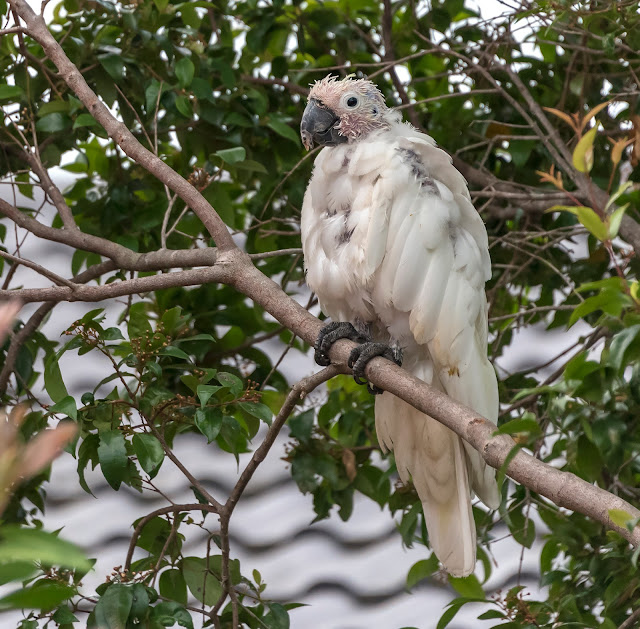Just a quick note on a happier subject than the last post; I have been observing hatchling Penny lizards, Lampropholis delicata appearing at Casa da Ayre since the 21st December 2017.
It's now the fifth of January 2018 as I write this post. To my great delight they are starting to appear in ever-increasing numbers this week.
Friday, 5 January 2018
Thursday, 4 January 2018
Nothing can be done - it's PBFD
 |
| Sulphur crested cockatoo with Psittacine beak and feather disease (PBFD) |
I will never forget working as a zoo keeper in the Northern Territory and encountering a very distressed young magpie goose on the ground during my rounds. It was seemingly uninjured, but clearly distressed and unable to fly. I took it to the Park's vet centre for treatment, and the young vet, just euthanised it on the spot without even trying to treat the bird.
Her attitude shocked me at the time, but with hindsight it was completely reasonable. Here was an abundant species, that had little chance of successful treatment & recovery and eventual release. It was almost certainly botulism - extremely common in the Top End during the dry when the birds were stressed . . . no chance. Kindest to end the suffering now than waste lots of time, money and scarce resources better spent elsewhere.
 |
| Close-up of PBFD |
This is serious business - it's a contagious virus and has been listed as a Key Threatening Process under the Commonwealth EPBC Act for a number of threatened species.
If you would like more information about this disease, I suggest visiting these Australian Federal Government sites;
1. Psittacine beak and feather disease (PBFD)
2. Beak and feather disease (psittacine circoviral disease) Fact Sheet
3. Key Threatening Process under the EPBC Act 1999
Subscribe to:
Comments (Atom)